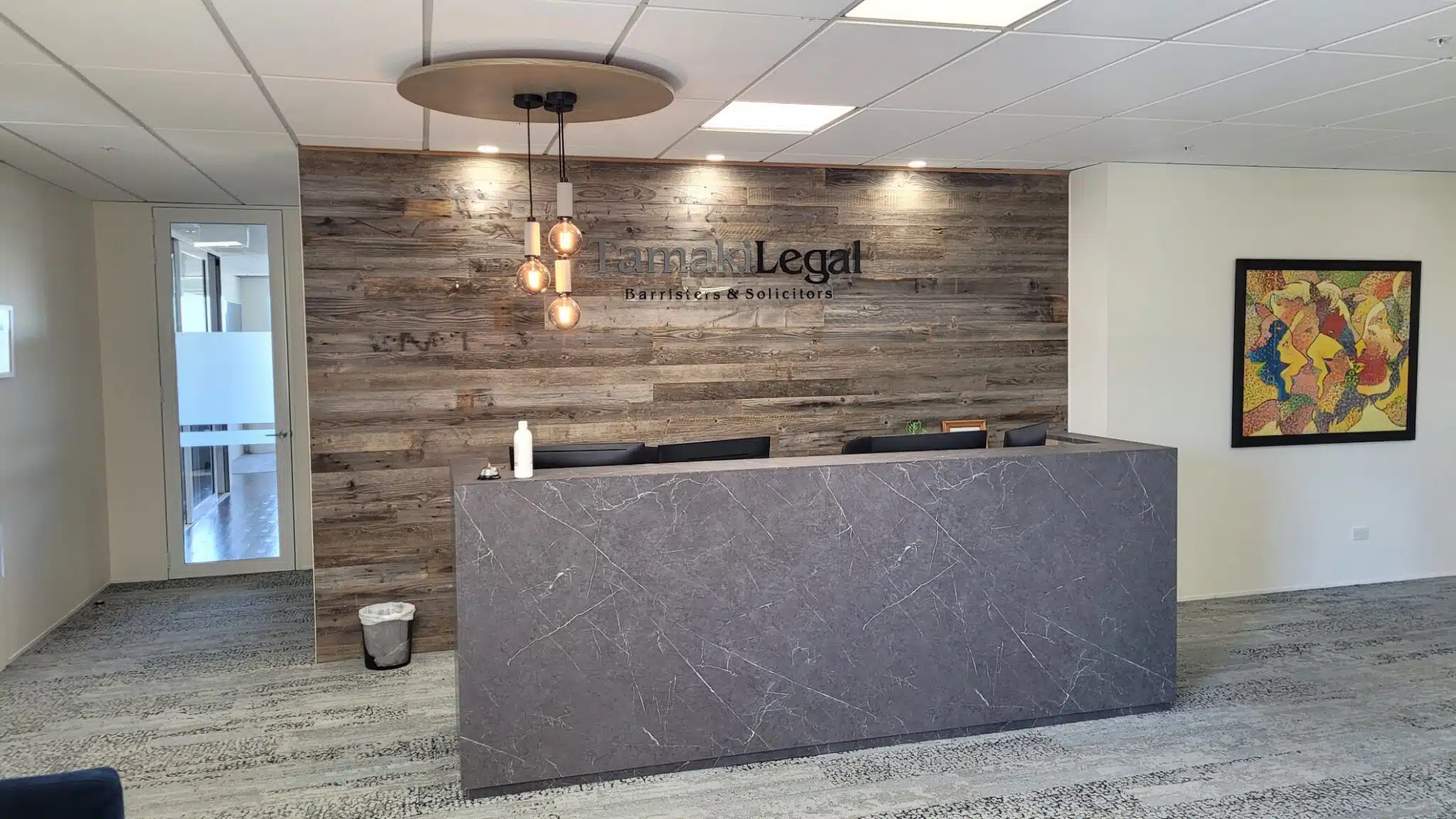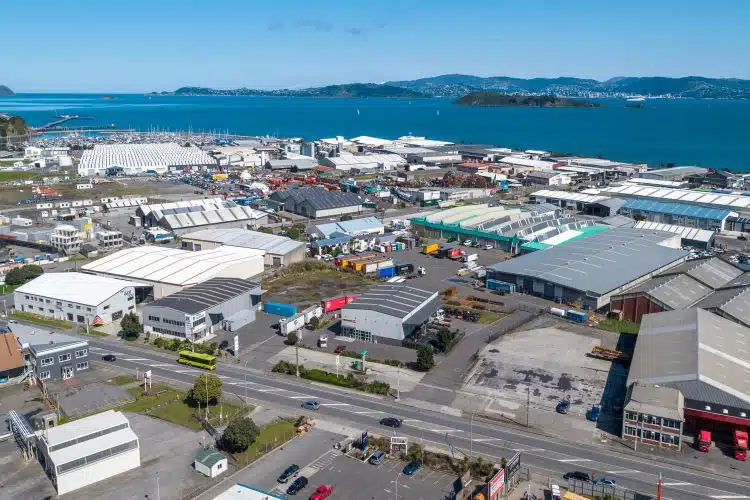
Case Study: Mastering Property Purchase Strategies
Gooder Equipment: Commercial Property Purchase - Strategy and Pricing
Case Study No: 25

Property purchase to relocate your business?
Gooder Equipment is the leading commercial laundry equipment supplier in New Zealand and the Pacific Islands.
If you have ever used a self-service laundromat or stayed in a campground, motel, or hotel, you are likely to use their equipment.
In the dynamic landscape of commercial property transactions, Gooder Equipment’s property purchase journey exemplifies the power of strategic planning and comprehensive due diligence when it comes to securing a valuable asset.
Operating across Auckland, Wellington, and Christchurch, Gooder Equipment embarked on a mission to relocate its Wellington Branch. Over 18 months, the company diligently scoured the market for an ideal property that aligned with its expansion goals. The culmination of their efforts led them to a promising opportunity: a commercial property going to tender in December.
This commercial property, a blend of partially developed space and vacant land, held immense potential for both investment and development.
However, the complexity of its mixed-use attributes and the lack of comparable sales data in the vicinity presented a unique challenge—determining a bid price that was both competitive and aligned with market realities.
Submit a bid price too low, and you miss out on the opportunity. Price too high, and you are paying a premium compared to the next highest bid price.
Property Purchase Process
Recognising the need for specialised guidance, Gooder Equipment enlisted the expertise of Proactive Property Group. In particular, Gooder’s wanted Proactive Property Group to undertake the following critical aspects for its property purchase:
Comprehensive Due Diligence: When buying commercial property, due diligence typically involves identifying issues that may impact the commercial property’s:
- lease and rental potential (current and future)
- use, constraints, and future development potential
- neighbourhood and access issues
- current and future value.
The objective of due diligence is to identify and factor in the property risks into your purchase price; this minimises the operational and financial risks downstream.
The due diligence process was meticulously executed, encompassing key elements like lease evaluations, future development potential, access considerations, and neighborhood dynamics. The goal was to uncover any potential risks and factor them into the bid price, ensuring a clear understanding of the property’s operational and financial outlook.
Strategic Acquisition Advice: Understanding the vendor’s motivations and objectives is pivotal in tailoring a suitable bid strategy for your property purchase.
When considering a commercial property purchase, it’s essential to understand:
- Who the vendor is and their motives and objectives for selling; this directly impacts their price and transaction expectations?
For instance, different objectives will drive the property sale from a listed entity compared to a private individual or family trust.
- The type of purchaser impacts demand and competitive tension.
Investors are likely to shy away from a purchase that requires additional investment or effort to realise value.
Developers will be deterred where there is a premium due to the existing investment value on-site or constraints on future use.
Owner-occupiers will only express interest if the property can accommodate their business or activity use.
Background knowledge and comparative sales research combine to provide an informed view of your tender bid price and strategy.
For instance, if the vendor wants to maximise the sale price, they may be willing to accept a conditional offer with a longer settlement. Or, they may be looking for certainty and a faster transaction and be willing to forgo a maximum sale price.
In some commercial property purchase transactions, we have submitted two bids and let the vendor choose their preferred approach:
- A low price and unconditional tender offer
- A higher price and conditional tender offer.
Typically, the purpose of the tender process is to receive all serious offers by a set date. Once tender submissions are received, there is usually a post-tender negotiation phase, especially with multiple offers.
The three levers a purchaser can use to get to the negotiating phase of the tender are:
- Price
- Terms and conditions
- Settlement date
The vendor’s motives and objectives will drive the weighting of price vs conditions vs timing.
Proactive Property Group delved into the vendor’s mindset, analysing their goals, whether driven by maximising sale price, quick transaction, or other factors. This insight guided the formulation of bid strategies that aligned with the vendor’s expectations.
Informed Bid Price and Strategy: The essence of the bid lay in striking a balance between price, terms, and timing. Leveraging their background knowledge and comparative sales research, Proactive Property Group crafted a multi-faceted bid strategy for Gooder’s property purchase. This involved not only proposing a specific bid price but also considering conditional vs. unconditional offers and settlement timelines.
Exit Plan Integration: The other recommendation when buying commercial property is to buy with an exit plan or value realisation plan in mind. Understanding how you will recover your capital investment when you sell helps you frame your bid price proposal.
In this instance, the long-term perspective was never lost. Integrating an exit plan, a vision of capital recovery upon eventual resale, played a crucial role in framing the bid price proposal. This forward-looking approach ensured that the property purchase aligned with Gooder Equipment’s overall business strategy.
Actions Taken
Proactive Property Group sourced and reviewed the following during the initial due diligence process:
- Tender information memorandum
- Property history
- Vendor details and ownership
- Legal titles
- Lease documentation
- LIM reports
- Building and Code Compliance consents
- Council zoning
- Geotechnical data
- Storm and sewer
- Transport accessibility
Based on the above and the nature of the property, we formed a view on the likely approach for assessing the property’s value.
With a value approach determined, the next step was to research comparable sales data to form a value of historical yields and land rates. We coupled this with an assessment of likely future outcomes and land rates, given forecast changes to OCR rates and market conditions.
The final step was to devise a tender bid price and bid strategy for the property purchase. We discussed this over a meeting, reviewed the due diligence findings, analysed the comparable sales data, considered the likely yield and land rate movement, discussed the vendor’s motives and objectives, and unpacked the property purchase tender terms.
The Client Outcome
With the due diligence process yielding vital insights and the bid strategy finely tuned, Gooder Equipment made its move.
The bid was submitted, and the vendor’s response was remarkably positive, requiring minimal negotiation.
The outcome was a resounding success—Gooder Equipment secured the property at a competitive price, paving the way for a seamless relocation and promising business future.
In conclusion, the journey of Gooder Equipment stands as a testament to the significance of strategic planning and meticulous due diligence in the realm of property purchase.
The marriage of comprehensive research, insightful bid strategies, and a clear-eyed exit plan ensured that the company not only secured a valuable asset but also laid the groundwork for future growth.
This case study underscores the importance of seeking expert guidance, analyzing market dynamics, and considering long-term objectives when navigating the complex landscape of property acquisition.
Client Testimonial
“We had been looking for a property in Wellington to relocate our Head Office. We were keen to find a site that offered development or investment potential beyond our business needs. We had made offers on two separate properties over the preceding 12 months. Both bids had been unsuccessful.
When another suitable property came up, we sought help to evaluate and formulate our offer.
Throughout 2021, the property market was constantly changing, making it difficult for us to estimate where our offer should be and how to structure it. The property in question had three tenants and some vacant land suitable for building to our requirements. It was difficult for us to get a clear idea of what level our offer should be; this was to be a significant purchase for our company. We needed to be successful in our purchase attempt as our existing building must be compulsorily purchased.
We had already viewed the buildings and liked what we saw but did not want to rely solely on the information that we would get from the agents involved in the sale. That’s where Marcus came in. He assisted us by researching the property and comparable sales in the area. This vital information saved us money as our initial value estimates were higher than the price for which we purchased the property. Marcus gathered information that allowed us to formulate our value ideas and consider the next steps with the property after the purchase was complete.
During our meeting, the day before we made our offer, we discussed our ideas for the property and got a better idea of the vendors’ motivations and what they might be looking for in an offer beyond a pure dollar amount. We were also able to bounce around development ideas and troubleshoot potential building issues.
By engaging Marcus, we could get a clear idea of where and how to pitch our offer. It was excellent to know that the information we acquired from him was for our use and not influenced by anyone else’s requirements. We would have no hesitation in dealing with Marcus again on any transactions we may make in the future.”
Simon Gooder
Director
Gooder Equipment Limited
Share this case study to:

